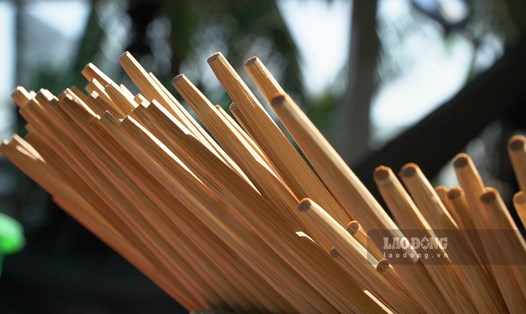Symbol of Vietnamese culture
According to Vietnamese traditional culture, bamboo chopsticks are indispensable on the Tet offering tray. Many families even buy new chopsticks to show solemnity.
Nowadays, in addition to traditional bamboo chopsticks, Vietnamese people also use many other types of chopsticks, such as: wooden chopsticks, metal chopsticks, hard plastic chopsticks... However, bamboo chopsticks still play an important role and are the most commonly used.
Bamboo chopsticks have appeared for a long time in Vietnamese history. Many documents show that bamboo chopsticks may have appeared in the lives of Vietnamese people since the Dong Son culture period (7th to 3rd century BC).
Bamboo chopsticks are not only a tool for eating and drinking in daily life, closely associated with culinary culture, but they also have profound cultural meanings. Vietnamese people often use the image of chopsticks to talk about harmony and family happiness. Because chopsticks always have to go in pairs, the 2 pieces in a pair must have similarities.
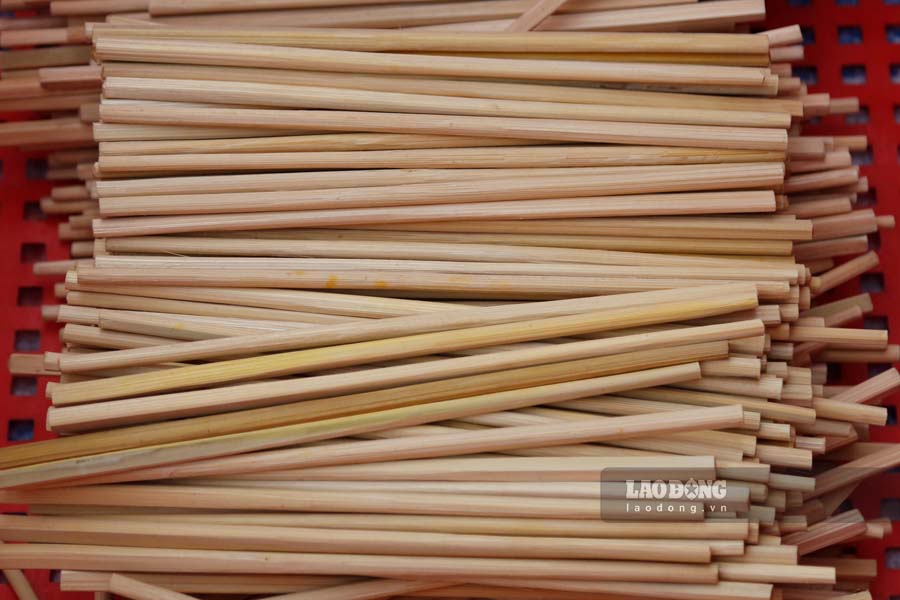
Or from a young age, all Vietnamese children are taught by their parents and grandparents how to use chopsticks as part of family etiquette and discipline. Through the way chopsticks are used during meals, one can partly judge a person’s culture.
Bamboo chopsticks are used flexibly to pick up, roll, mix and eat traditional dishes such as rice, noodles, pho, or hot pot and grilled dishes. Chopsticks are also indispensable items in spiritual ceremonies, Vietnamese people often place chopsticks on the offering tray to invite ancestors and gods.
Bamboo chopsticks from the hands of special craftsmen
In the days leading up to Lunar New Year, most people who live far away return home to reunite with their families. However, in the poor "dialysis" neighborhood in Noong Bua village, Noong Bua ward, Dien Bien Phu city, Dien Bien province, craftsmen are still diligently making sophisticated bamboo chopsticks.
Making bamboo chopsticks has helped many patients earn extra income to cover their living expenses and medical expenses. At the same time, this job also brings joy and confidence when patients continue to have to fight a long-term battle with an incurable disease.
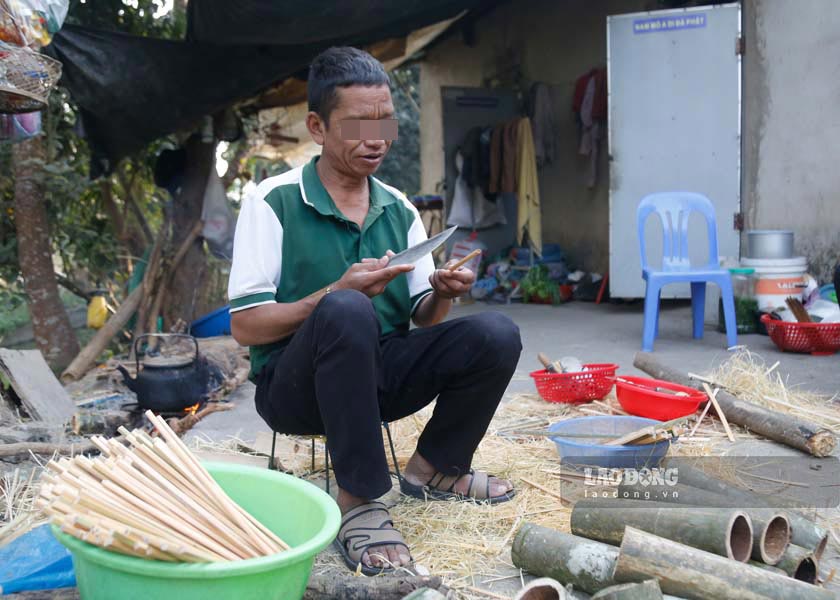
Mr. Giang A Thang (28 years old) - a patient on dialysis for 6 years and also the person in charge of selling bamboo chopsticks - said: "Although it is new, our product has received a lot of attention and support. That is a great source of encouragement for us to continue making meaningful handmade bamboo chopsticks".
Currently, bamboo chopsticks made by dialysis patients are sold for 3,000 VND, helping many patients earn extra income, covering part of the cost of dialysis. More importantly, these products carry a message of resilience, solidarity and humanity.
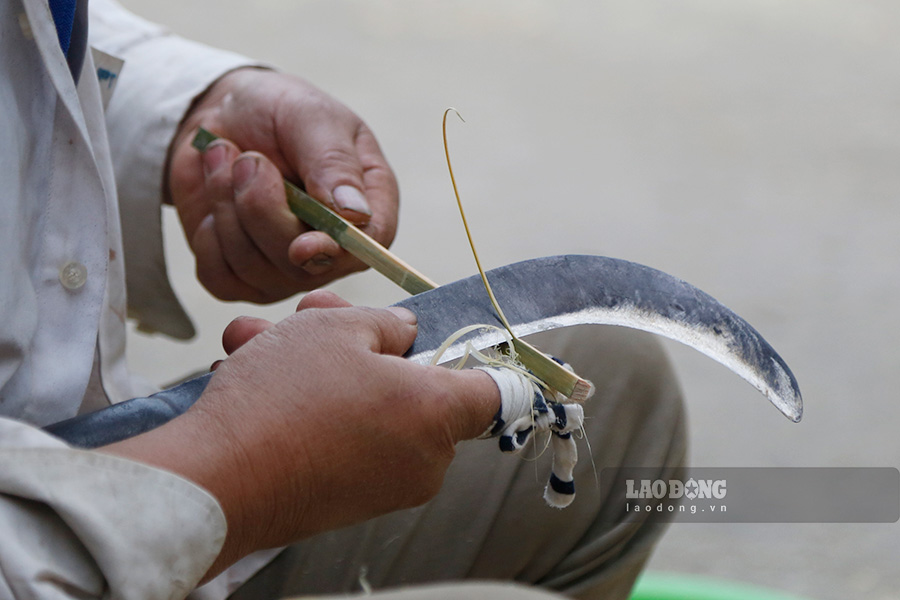
Ms. Lo Thi Cam - one of the dialysis patients who directly participates in making chopsticks - said: "Every day, I make about 60 pairs of bamboo chopsticks. This job is not difficult, just need to be meticulous and persistent to be able to make a satisfactory product."
Ms. Lo Thi Hoan - who has "spent her entire youth" taking care of her 26-year-old son who has had kidney disease for more than 10 years - said: "Every pair of bamboo chopsticks we make sells out, so everyone is happy. Making bamboo chopsticks not only brings joy to people but also helps them have more money to buy medicine."
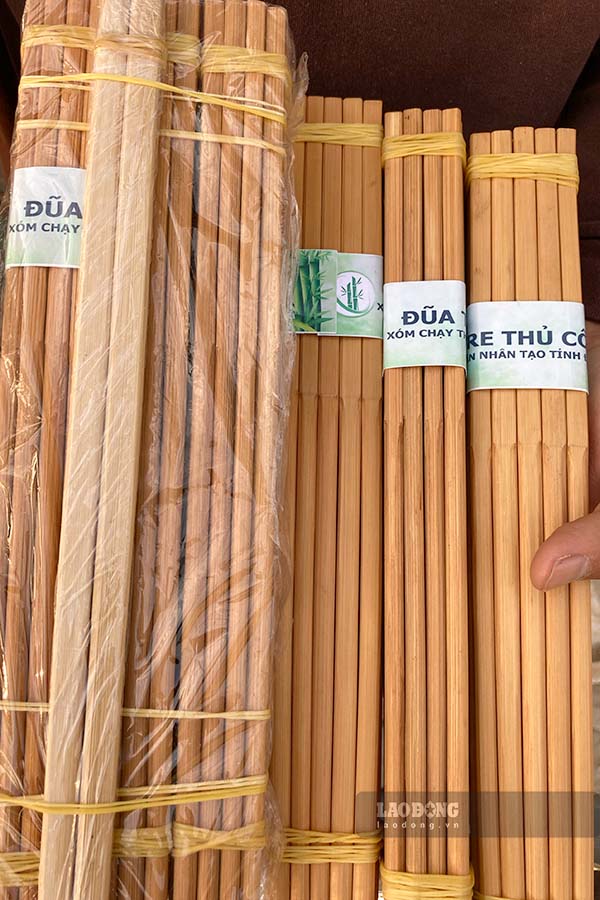
As for Mr. Pham Van Thai - the one who initiated the idea of making manual bamboo chopsticks for dialysis patients - success today is a great motivation from a very simple idea - wanting to let people not tired waiting for time to pass.
“It is a great joy that the bamboo chopsticks we make are always popular, sometimes even sold out. This not only helps patients earn more income but also strengthens their spirit to overcome the disease,” said Mr. Thai.
Although it is not comparable to the sophisticated machine products, but the handmade bamboo chopsticks made by dialysis patients carries in themselves a very special value.










